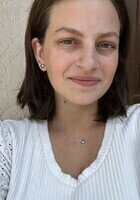All SAT II Biology E Resources
Example Questions
Example Question #1 : Bacteria And Prokaryotes
An experiment was conducted in which motile bacteria were grown in petri dishes containing different concentrations of a collection of nutrients called yeast extract tryptone sea salts (YTSS). The bacterial growth of each dish was measured and the results are displayed in the given bar graph.

Which of the following is the most optimal concentration of YTSS for bacterial growth?






This question examines your ability to read a graph correctly. The optimal concentration of YTSS for bacterial growth is the concentration of YTSS in the dish that allowed for the most bacterial growth in 24 hours. Looking across the vertical bars, which represent bacterial growth in millimeters, the dish that had the highest amount of bacterial growth was the dish containing a concentration of 

Example Question #1 : Microbiology
Which of the following structures is not found in prokaryotic cells?
Plasmid
Ribosome
Nucleus
Plasma membrane
Cell wall
Nucleus
The correct answer is the "nucleus." Prokaryotes generally do not have membrane-enclosed organelles, and they do not have a nucleus. Plasmids are found in all prokaryotes, as well as in fungi. The other structures are found in both prokaryotes and eukaryotes.
Example Question #131 : Sat Subject Test In Biology
Where in prokaryotes do the reactions of the electron transport chain take place?
Inner mitochondrial membrane
Inner cytoplasmic membrane
Periplasmic space
Cytosol
Mitochondrial matrix
Inner cytoplasmic membrane
The correct answer is the inner cytoplasmic membrane. Prokaryotes do not have mitochondria or any other membrane-enclosed organelles, but the electron transport chain must be performed in a membrane in order to create a concentration gradient of protons; therefore, prokaryotes perform the redox reactions of the electron transport chain in the inner cytoplasmic membrane in between the cytosol and the periplasmic space.
Example Question #1 : Microbiology
Which of the following is true about viruses?
Viruses consist of a nucleus, cell membrane, and several mitochondria in order to make their own energy.
Viruses reproduce via sexual reproduction.
Viruses are considered to be non-living organisms.
Viruses will immediately infect any living thing, and are unable to be removed.
Viruses are considered to be non-living organisms.
Viruses are considered non-living organisms because they have no organelles or other cellular machinery, they cannot reproduce without a host cell, and they have no metabolic activity.
Example Question #2 : Viruses
Viruses can do which of the following?
Metabolize chemical compounds
Reproduce outside of a cell
Produce proteins
Carry DNA
Respond to outside stimuli
Carry DNA
All viruses can and must carry either DNA or RNA (but not both). However, viruses cannot reproduce on their own, and must infect a host cell in order to manufacture more copies of itself. They cannot respond to outside stimulus as they do not have any functional parts, such as mitochondria, ribosomes, or a nucleus. For the same reason, viruses also cannot produce proteins or metabolize chemical compounds.
All SAT II Biology E Resources




